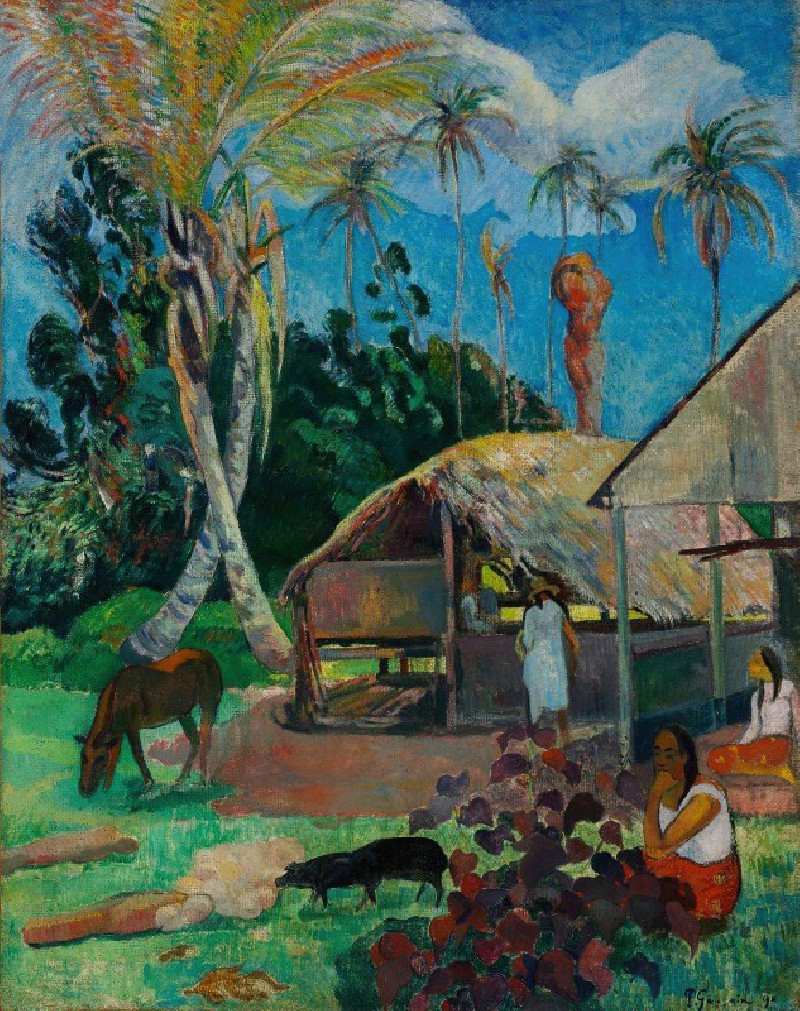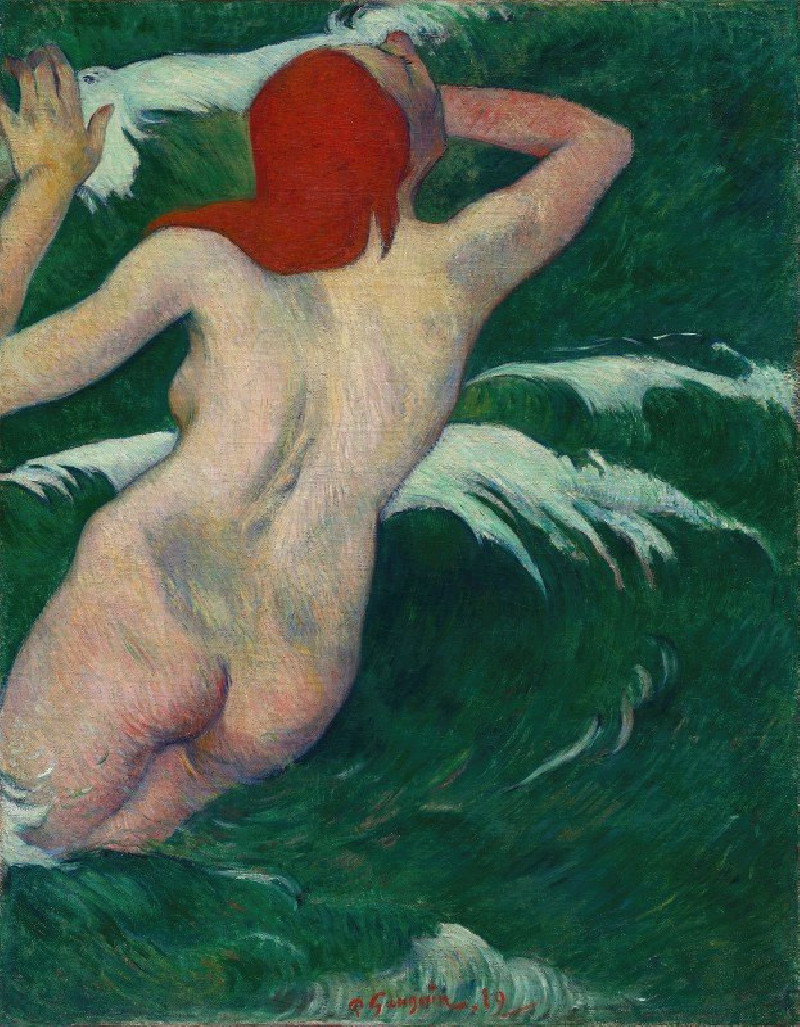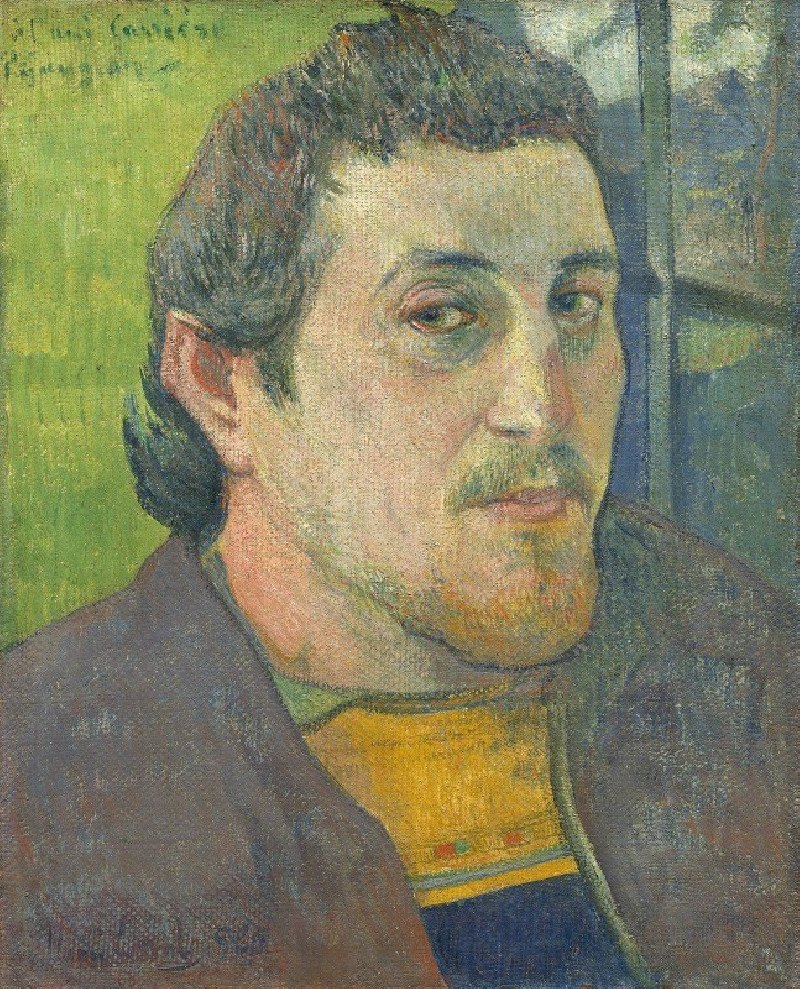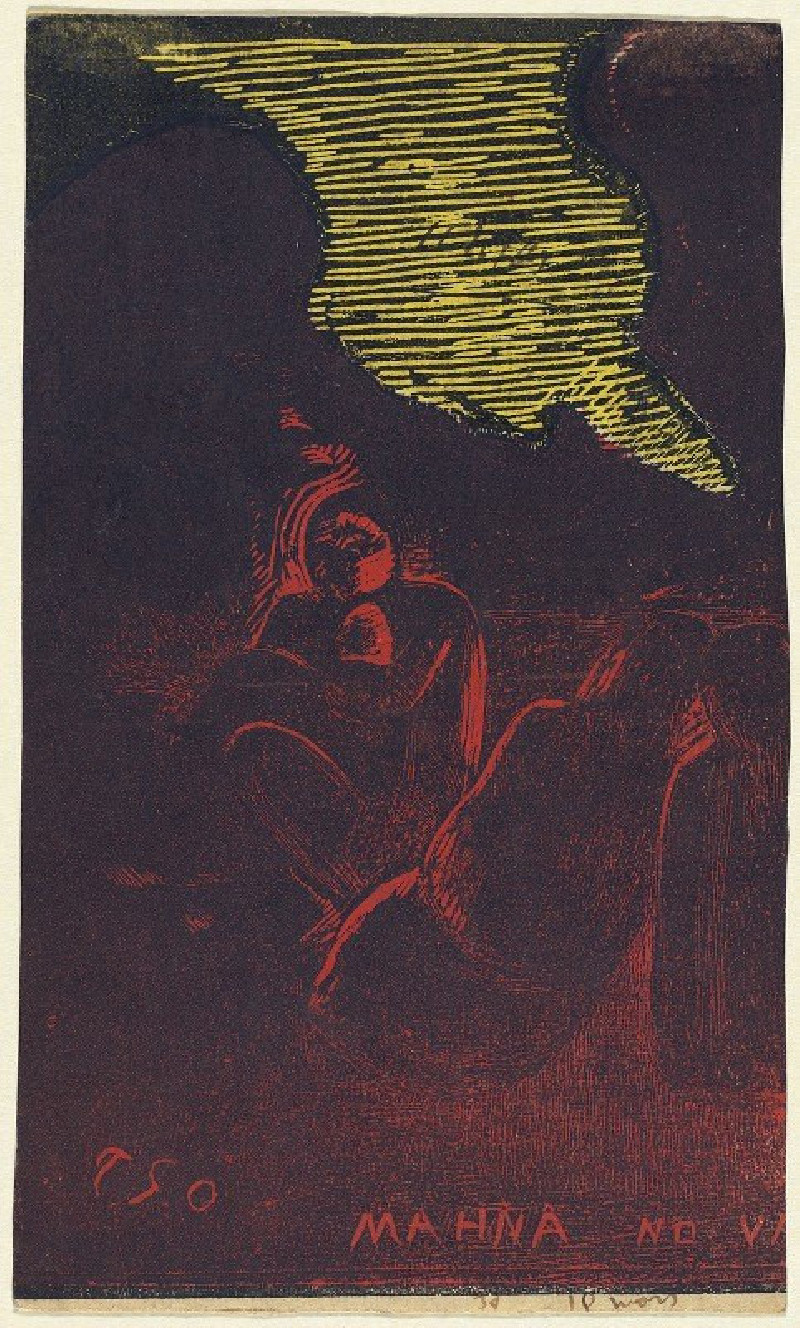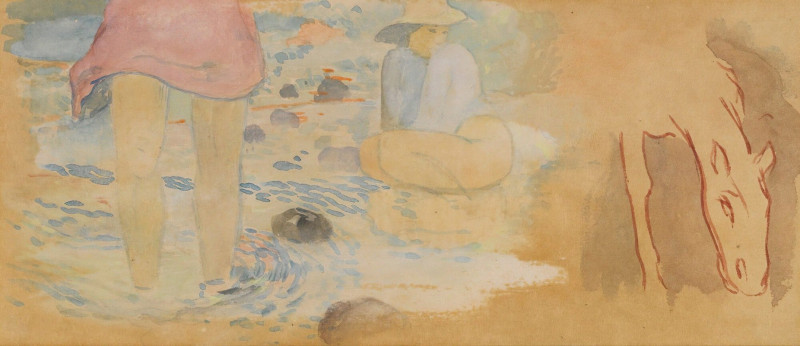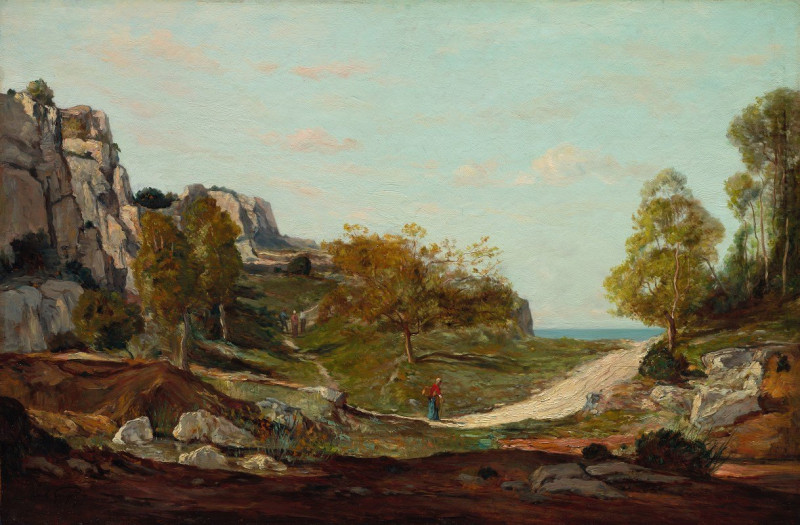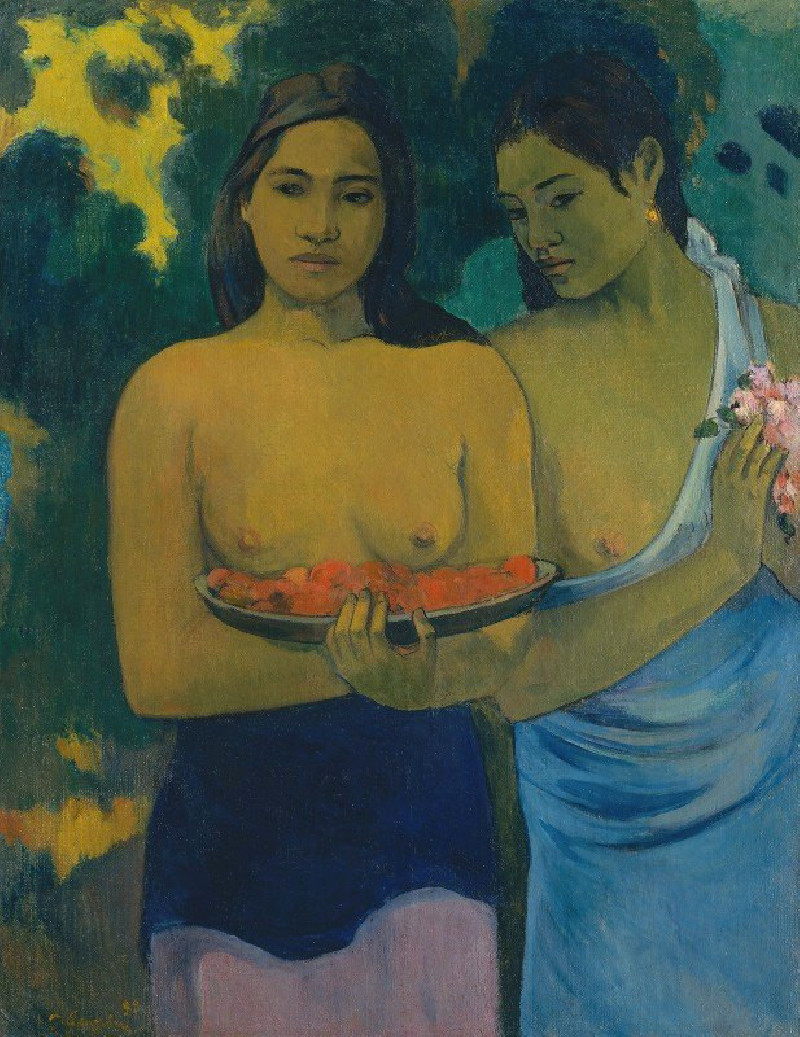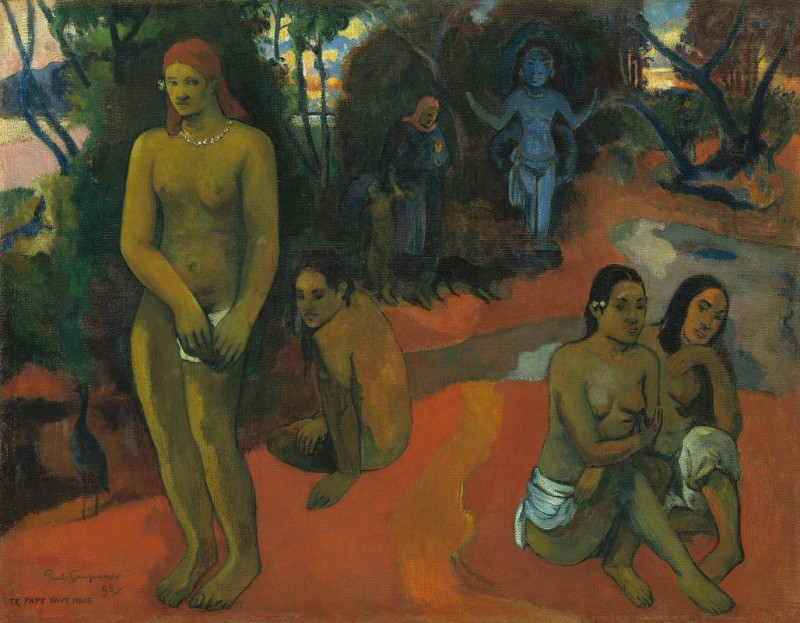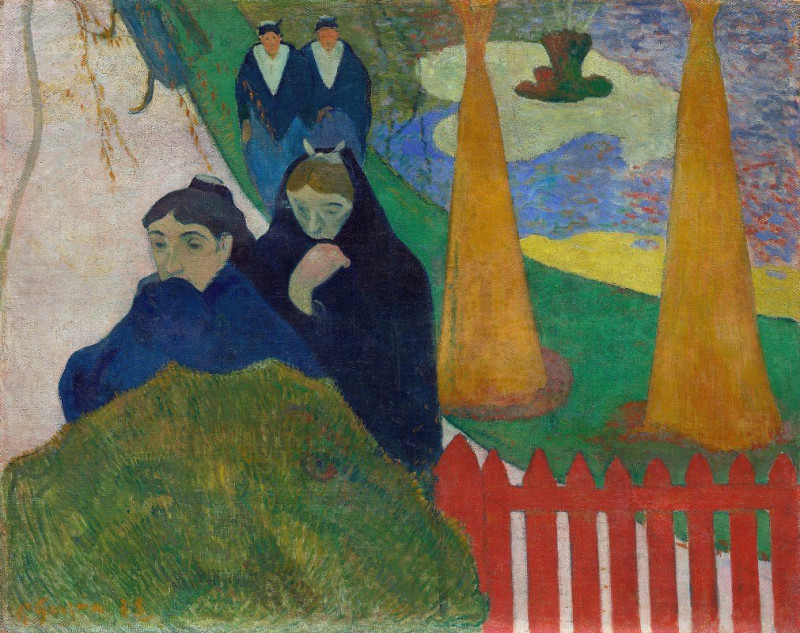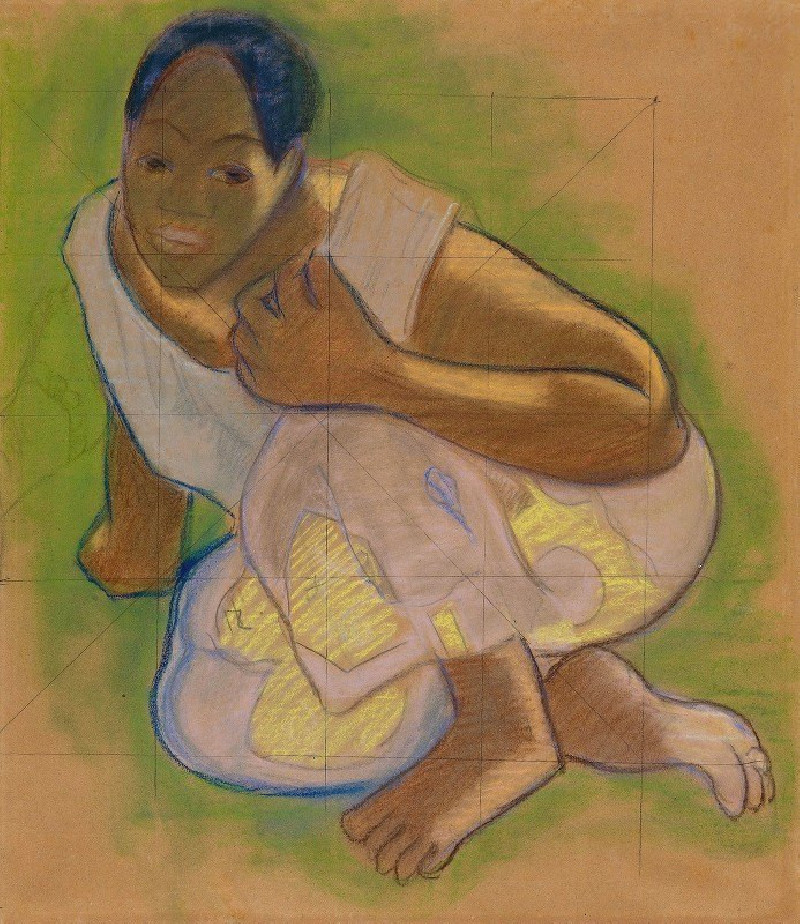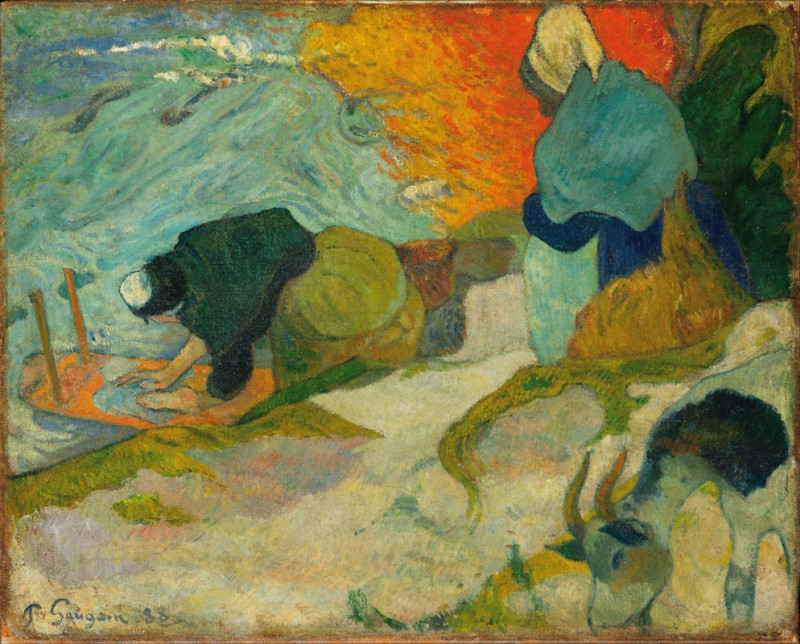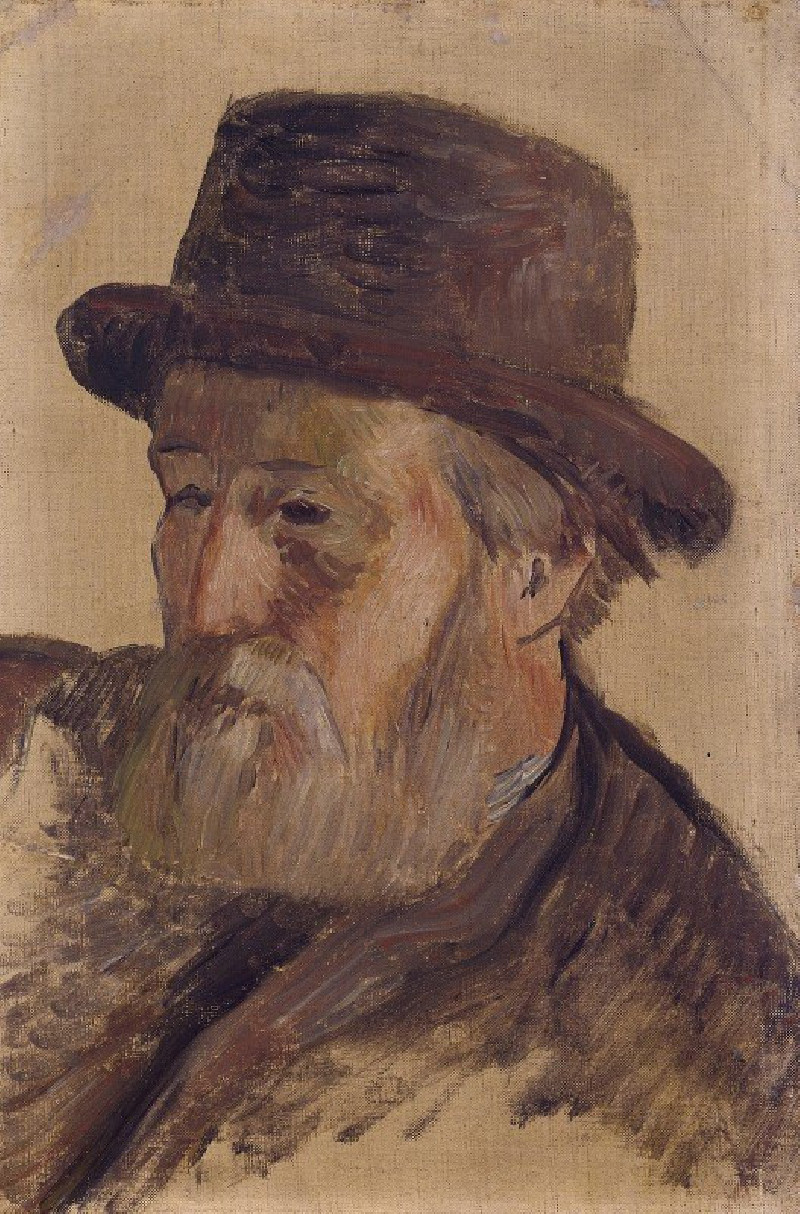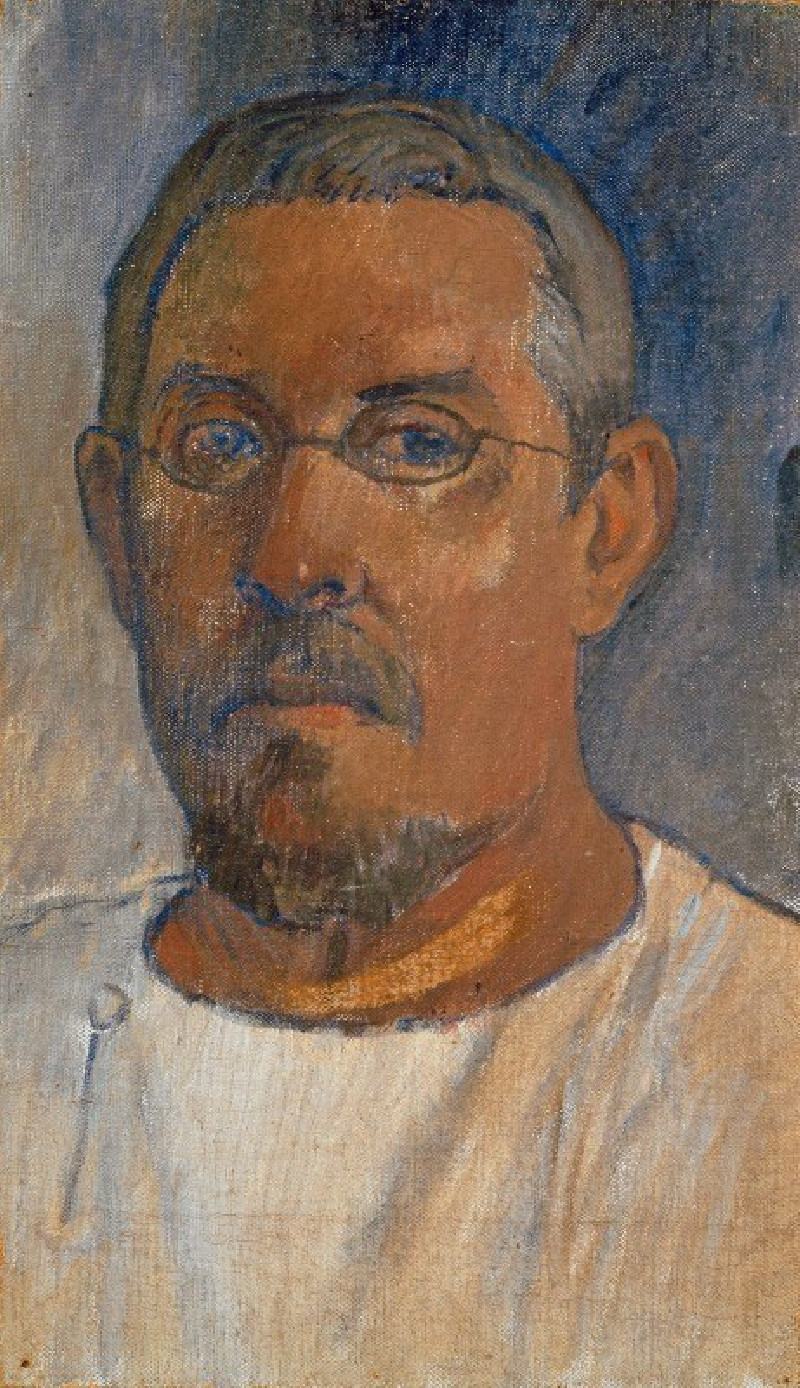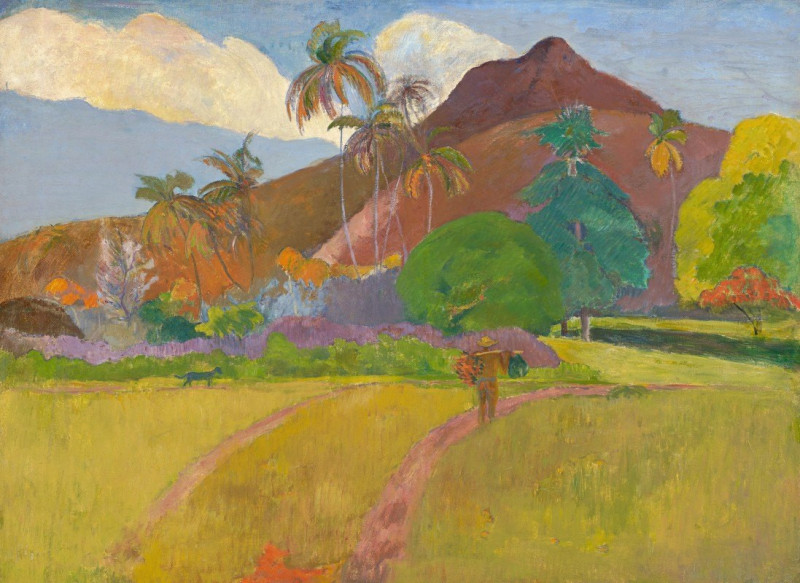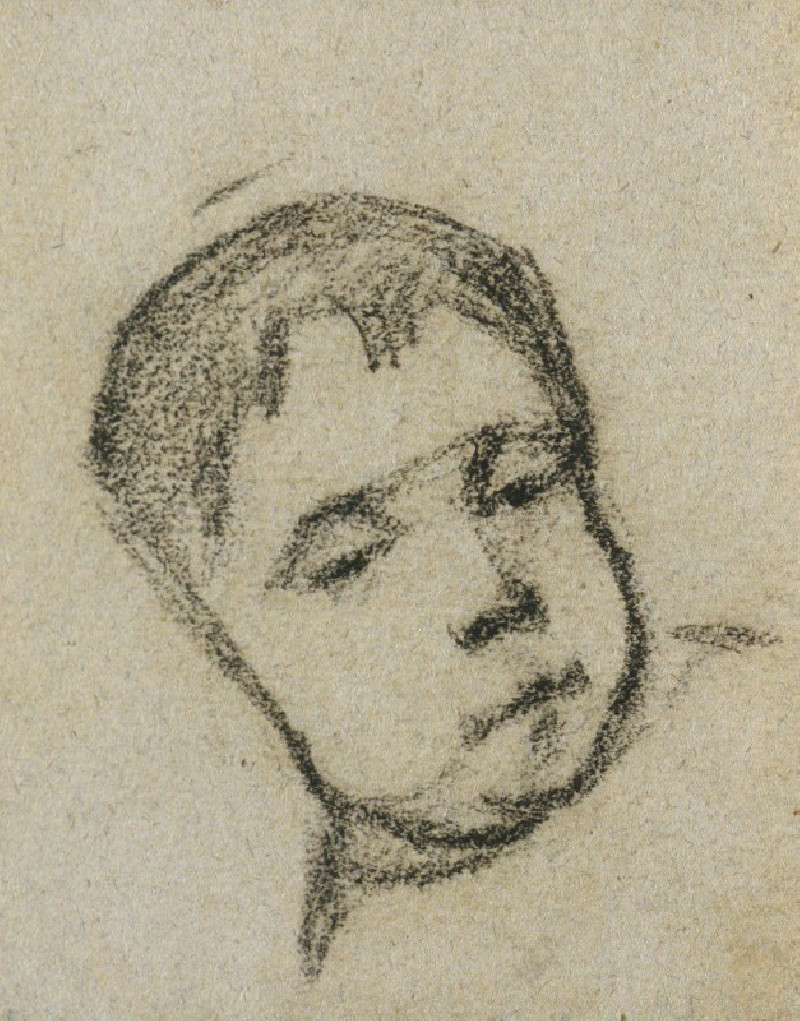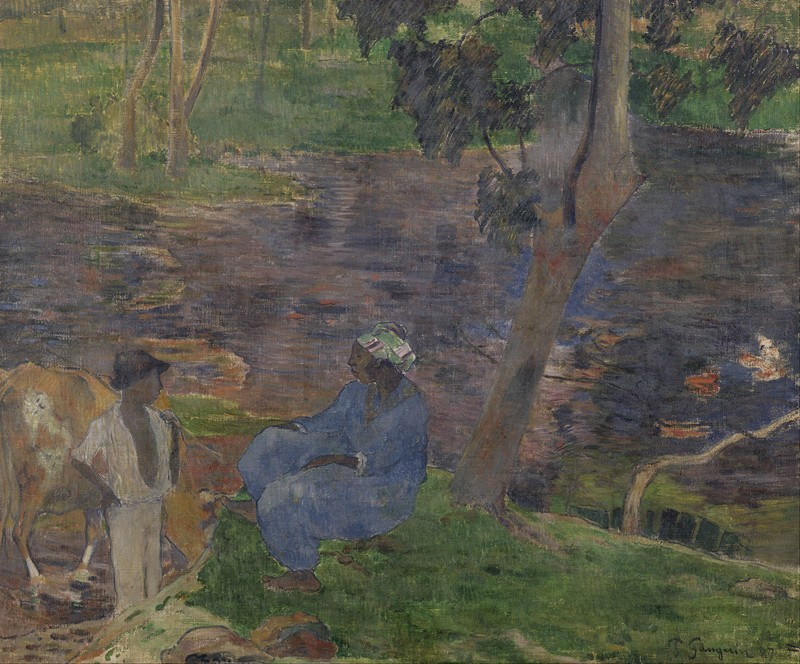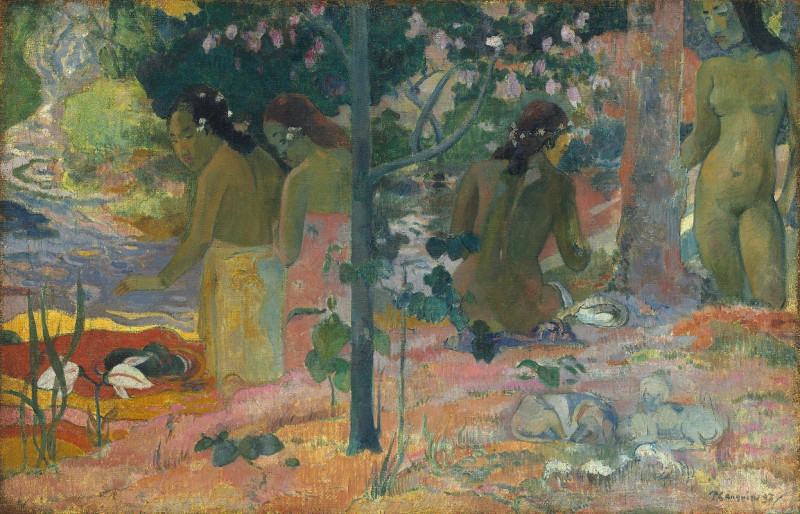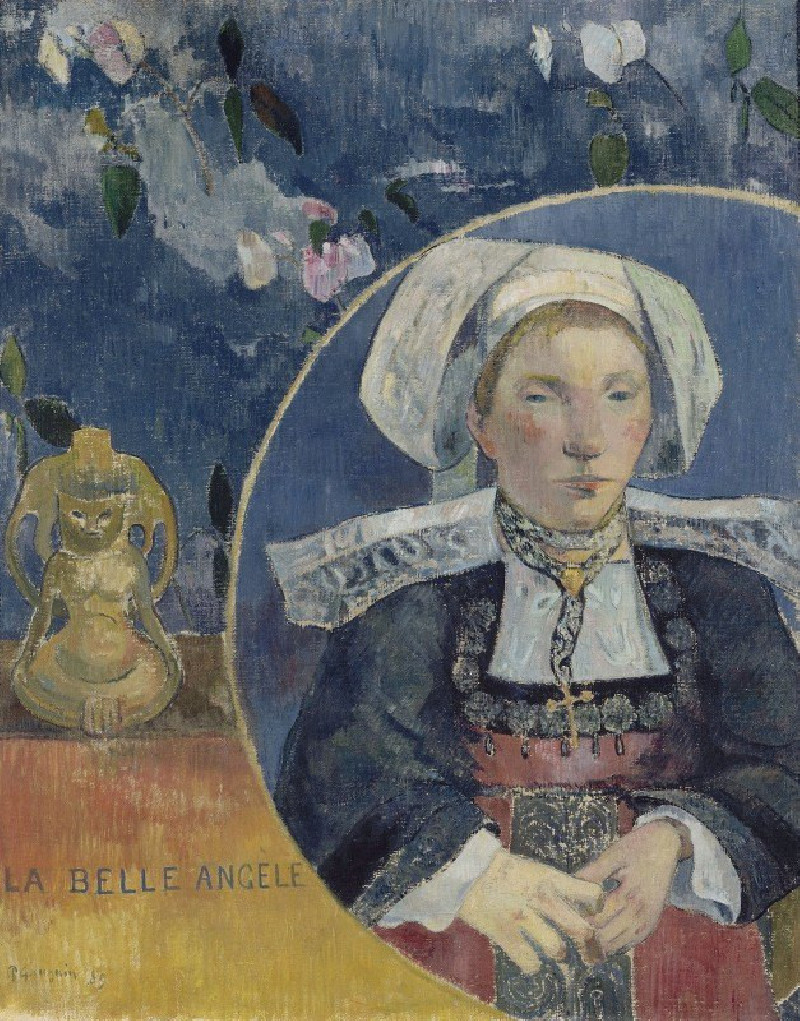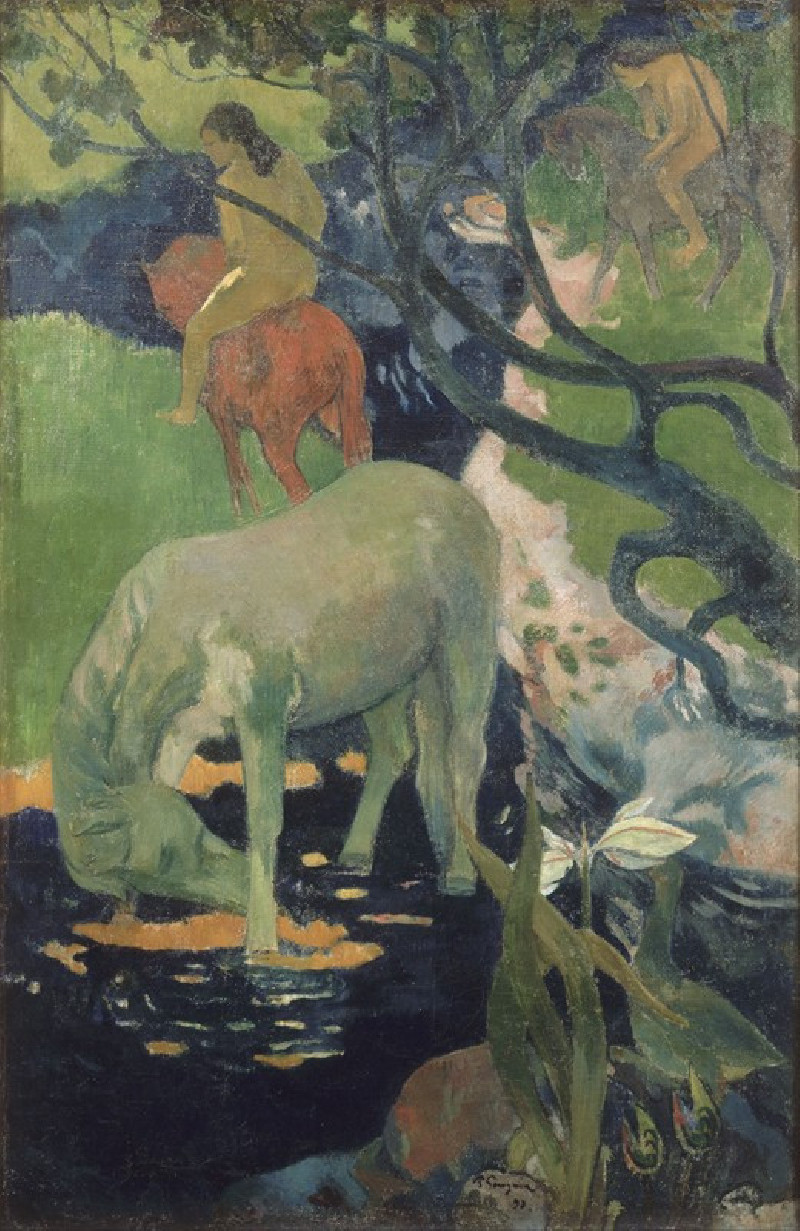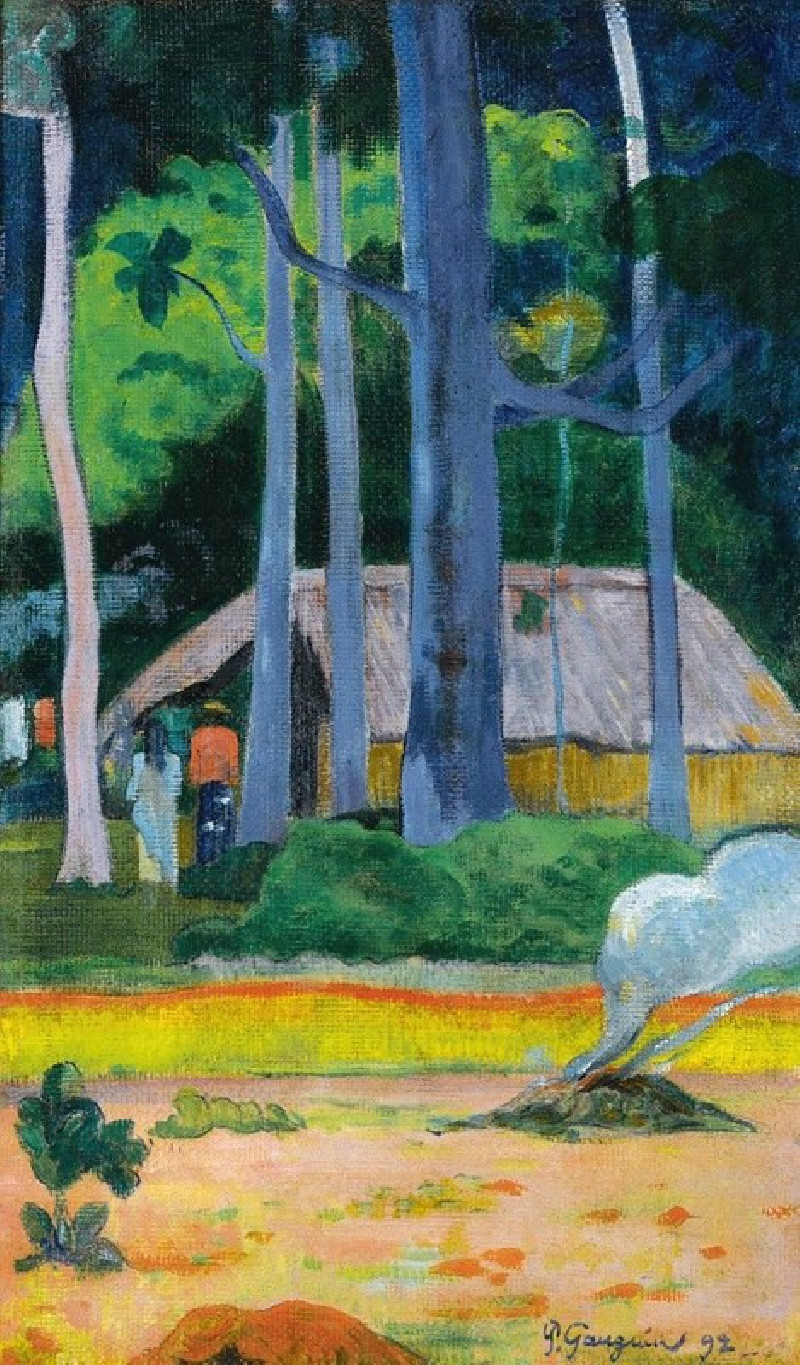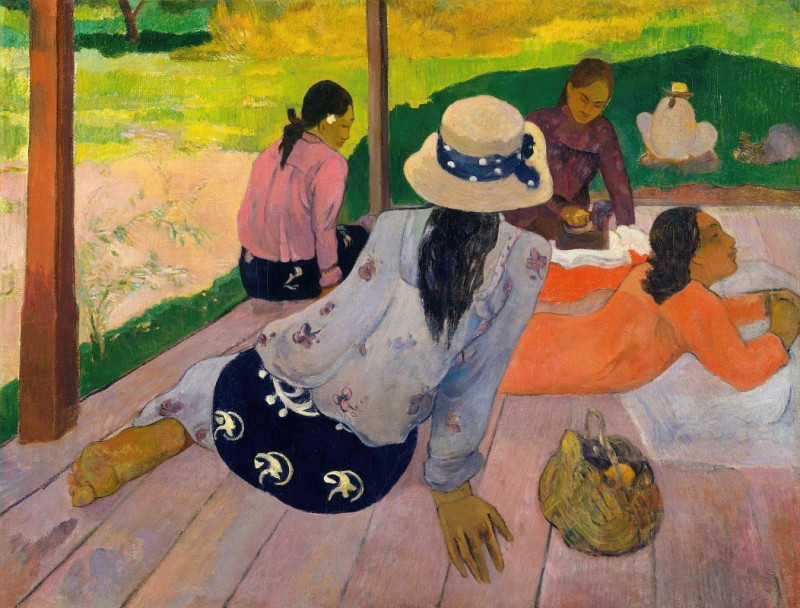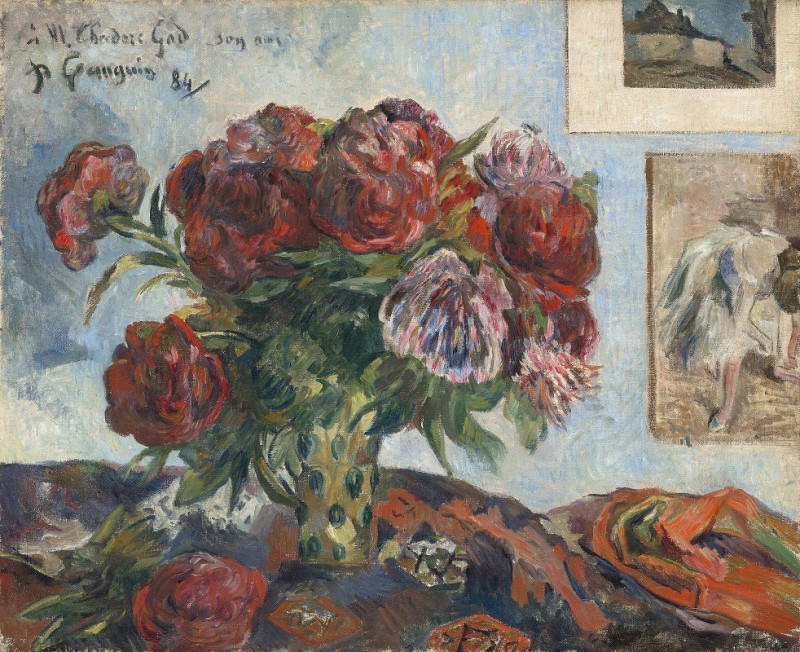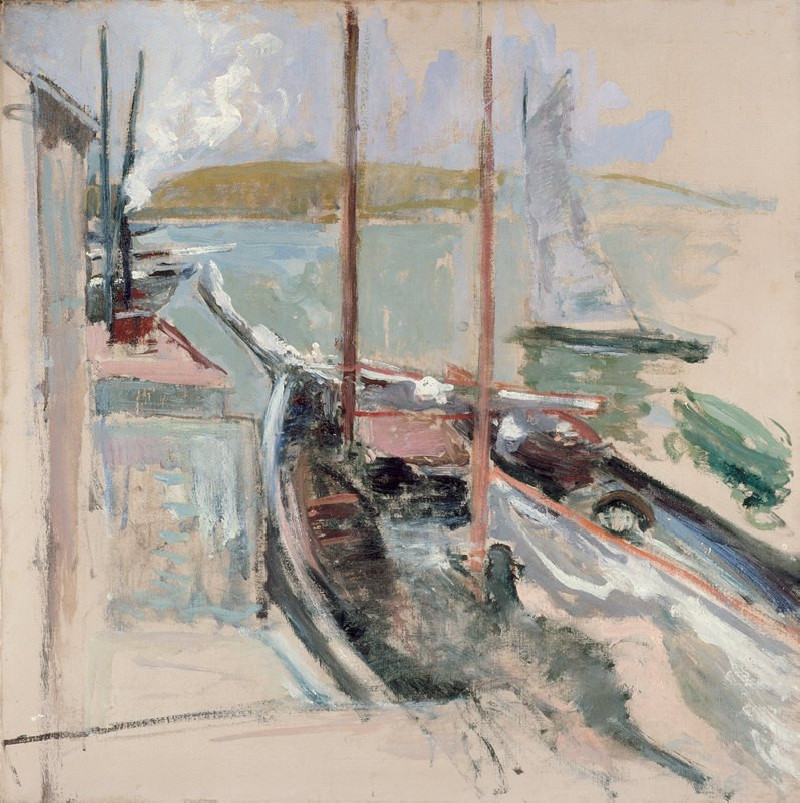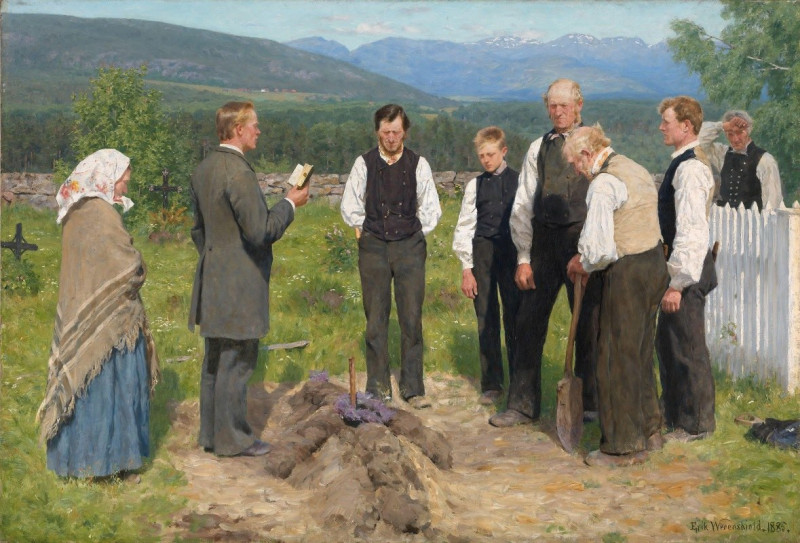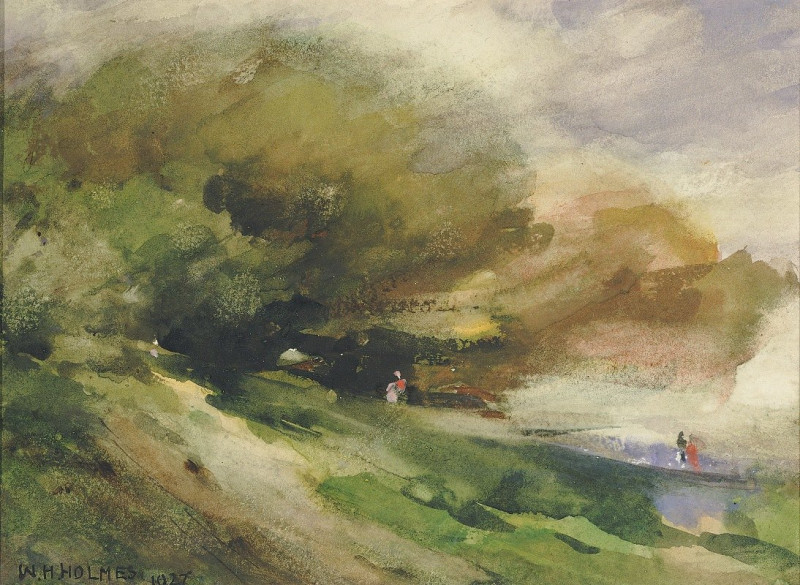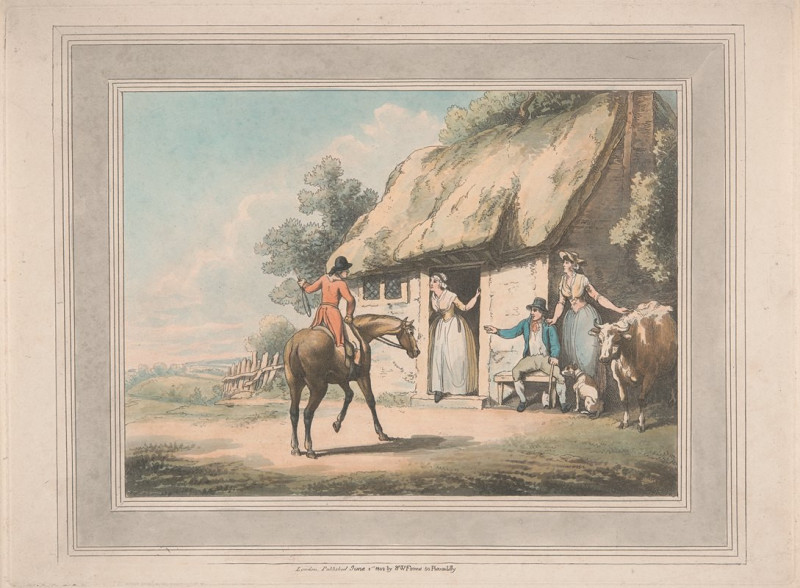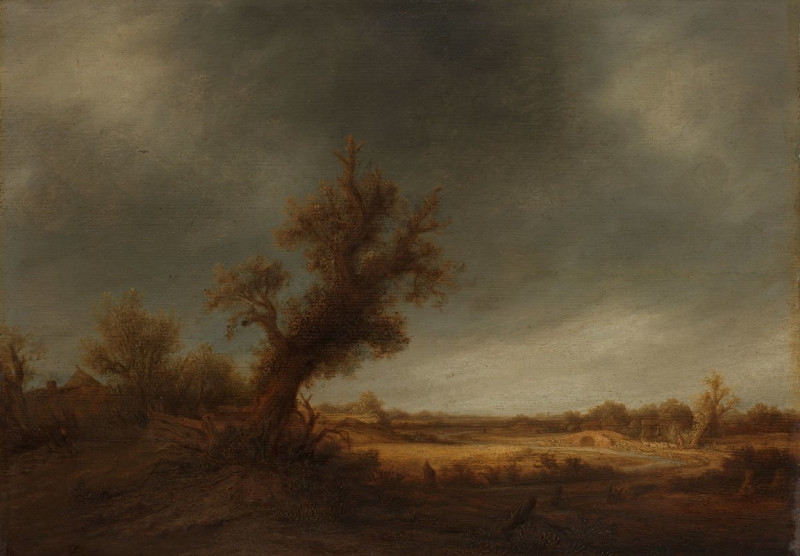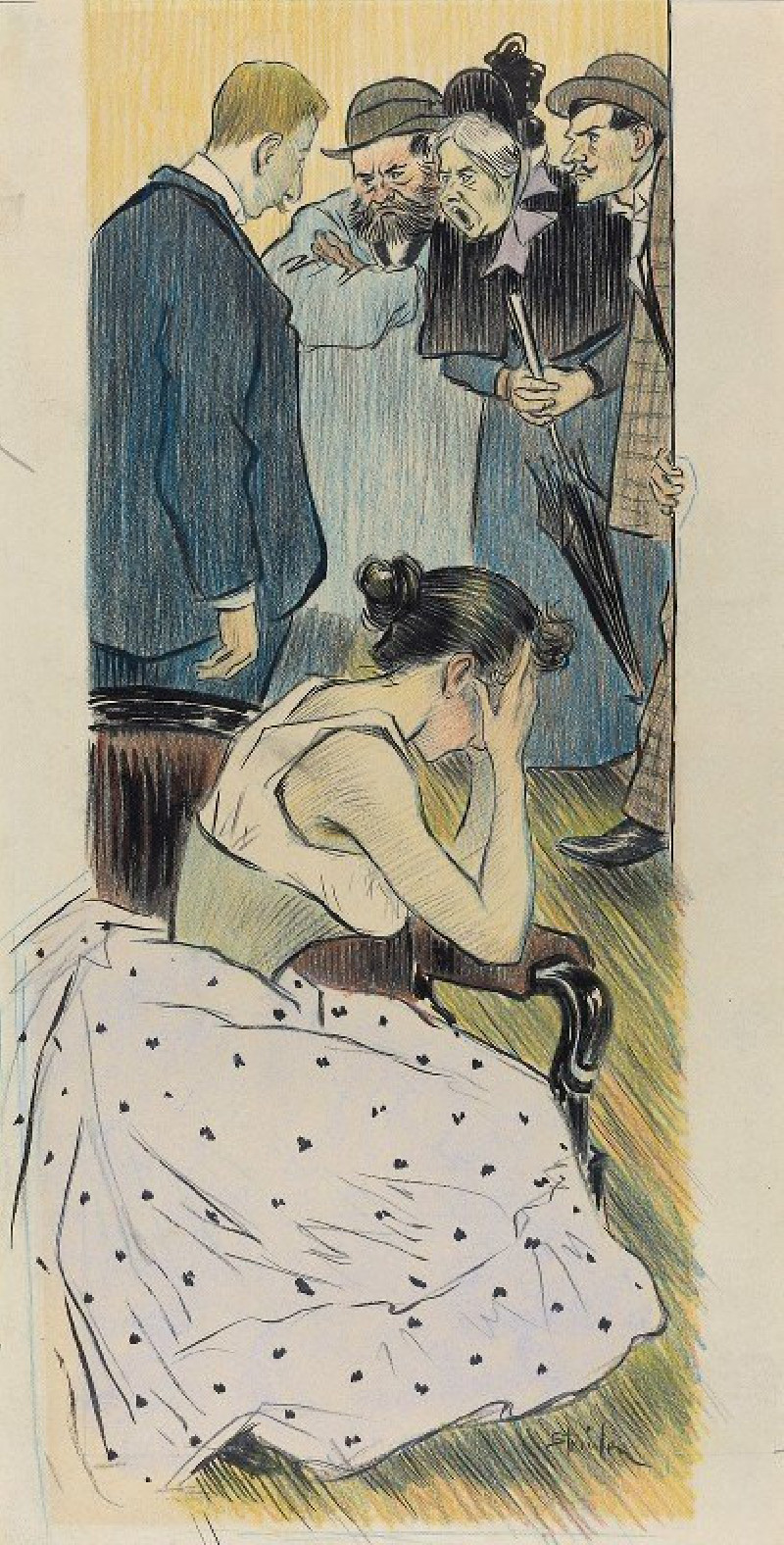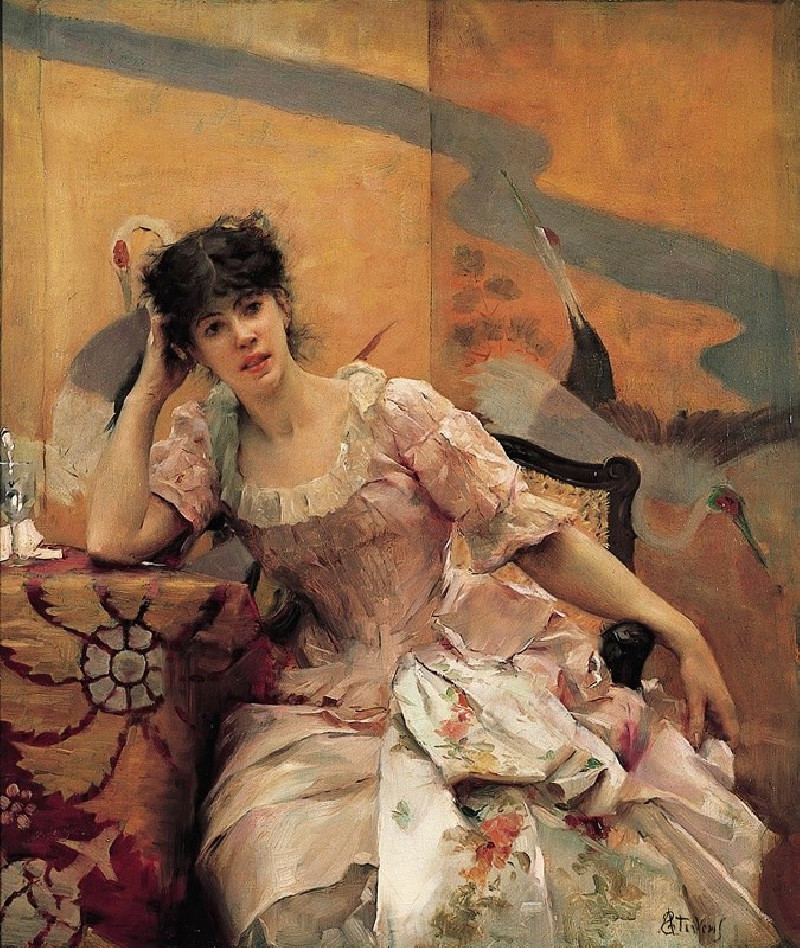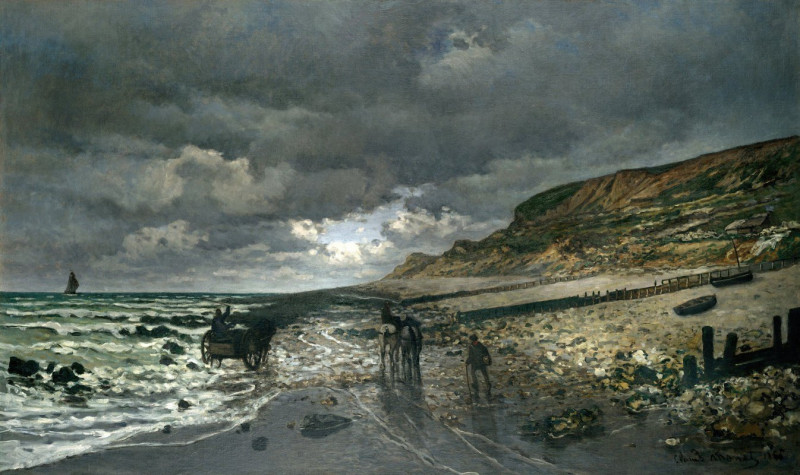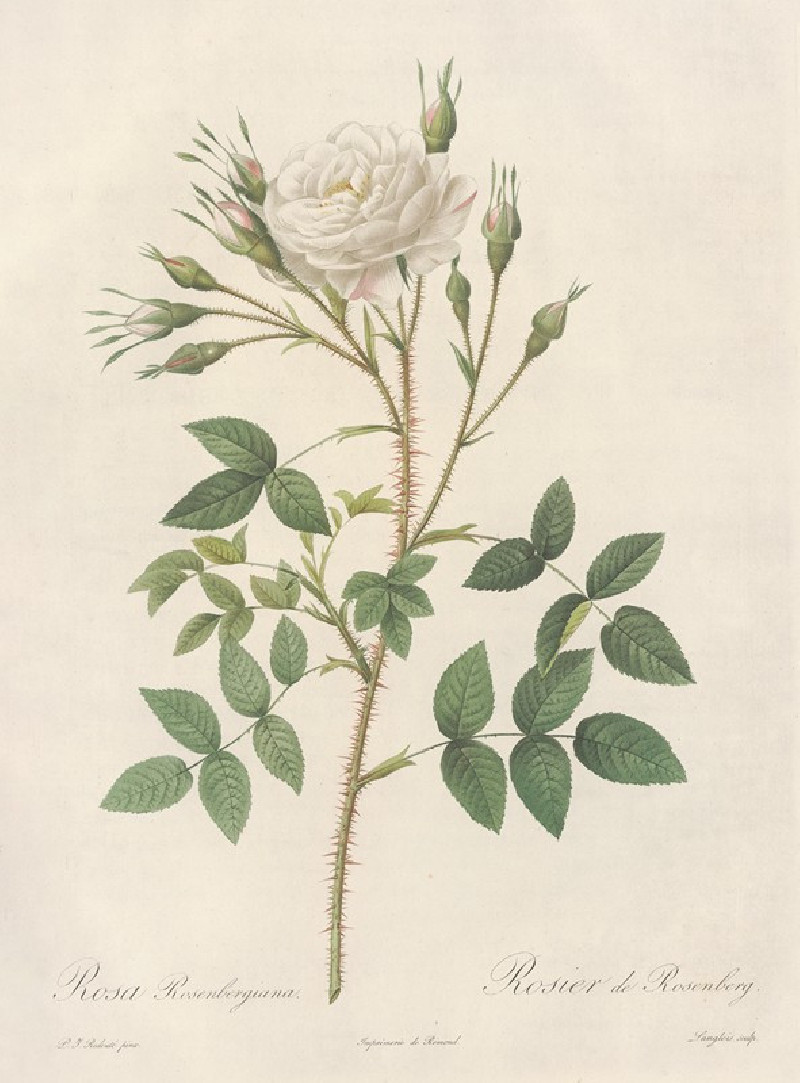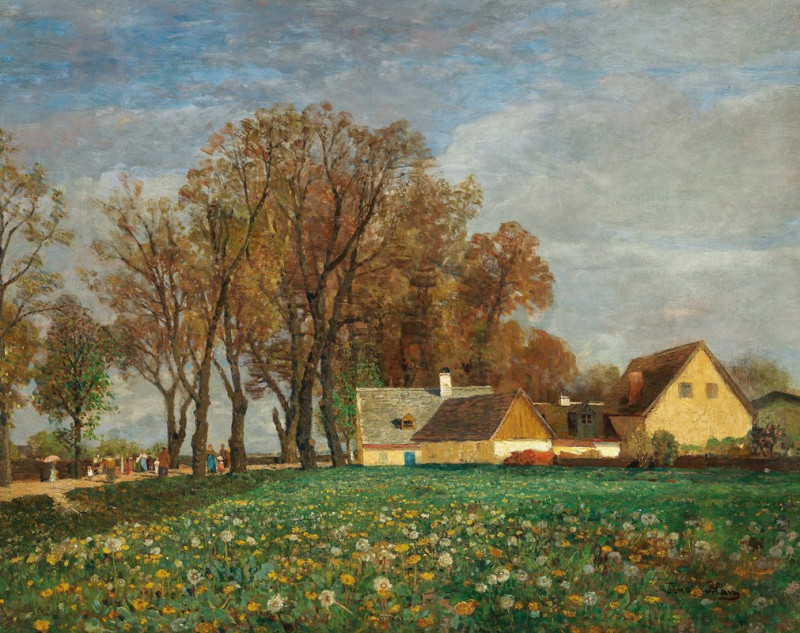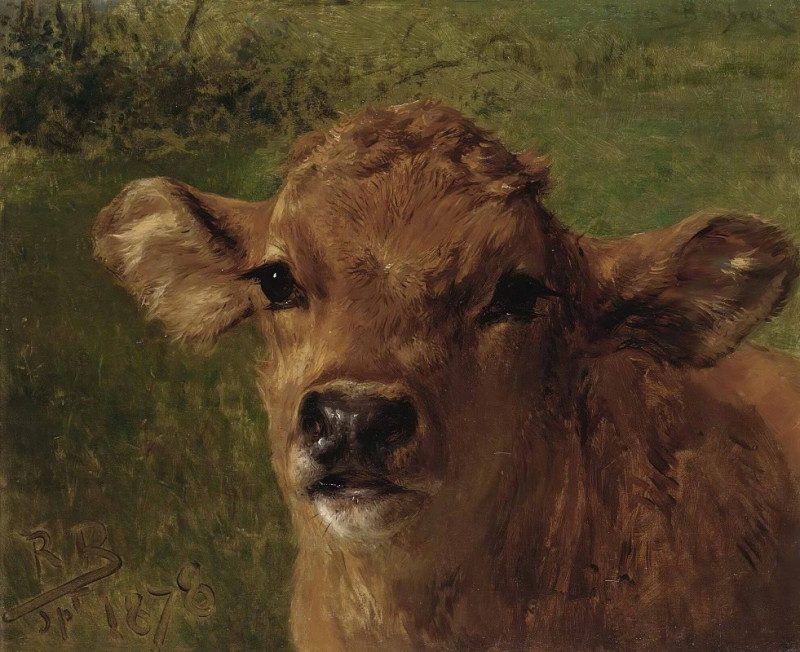Les dindons, Pont-Aven (1888)
Technique: Giclée quality print
Recommended by our customers
More about this artwork
Paul Gauguin's painting "Les dindons, Pont-Aven," created in 1888, captures a serene landscape filled with the lushness of nature and the quaint charm of rural life. This artwork portrays a lush garden scene set in Pont-Aven, a small village in Brittany, France, which was known to be a hub for artists during this period.In the forefront of the painting, two turkeys dominate the view, portrayed with rich, dark plumage that contrasts strikingly against the vibrant greens of the grassy landscape. These two birds, with their full feathered bodies and distinctive red and blue heads, are depicted amidst a setting that is alive with the flourishing greenery of spring or summer.The background reveals a picturesque view of the village with its traditional stone cottages nestled under soft blue skies, dotted with fluffy, white clouds. Through the trees and foliage, one can see hints of human activity and the rural lifestyle that typified the area during the late 19th century.Gauguin’s brushwork brings a dynamic texture to the scene, where the dappled sunlight filters through the leaves, creating patterns of light and shadow on the grass and paths. This interplay of light enhances the tranquil and somewhat rustic beauty of the scene. The artist’s use of vibrant colors and his ability to capture the quiet yet vivid atmosphere of Pont-Aven make "Les dindons, Pont-Aven" a compelling depiction of rural French life.
Delivery
Returns
Eugène Henri Paul Gauguin was a French Post-Impressionist artist. Unappreciated until after his death, Gauguin is now recognized for his experimental use of color and Synthetist style that were distinct from Impressionism. Toward the end of his life, he spent ten years in French Polynesia. The paintings from this time depict people or landscapes from that region.


